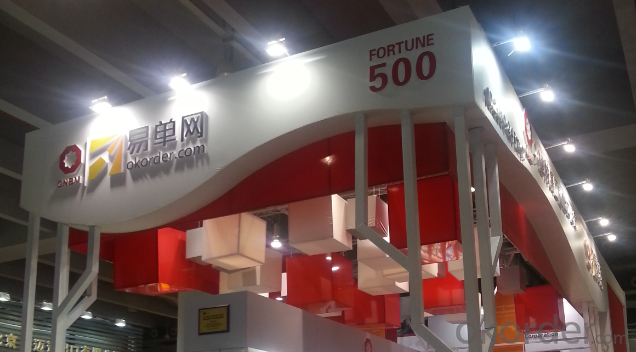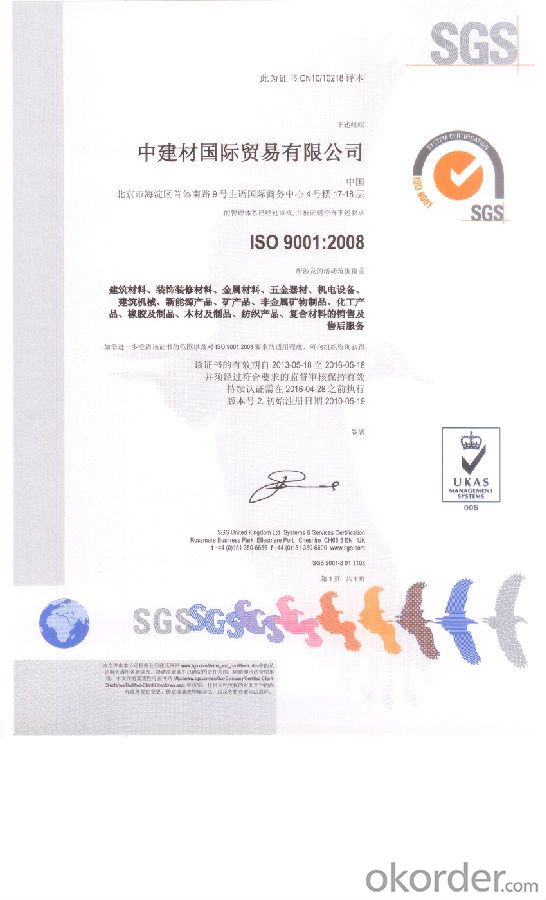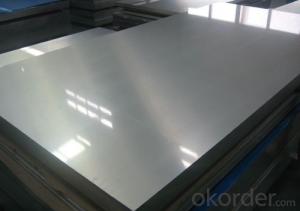Structural Framing and M achined Components Aluminum Sheet 6061
- Loading Port:
- Shanghai
- Payment Terms:
- TT OR LC
- Min Order Qty:
- 5 m.t.
- Supply Capability:
- 10000 m.t./month
OKorder Service Pledge
OKorder Financial Service
You Might Also Like
Item specifice
1.Structure of Structural Framing and Machined Components Aluminum Description:
Structural Framing and Machined Components Aluminum is for Construction material with good ductility, polishing ability and corrosion resistance, good electrolytic oxidation, suitable for welding. Have good plasticity qualities in an annealed state suitable when hardened. Very good corrosion resistance, this material is not inclined to stress corrosion cracking. Cutting tool workability in an annealed state is not suitable but is acceptable in a hardened temper. Used for medium strength components with long operation schedules in temperatures from 50°C up to 70°C, applications requiring specific technological properties, corrosion resistance, aesthetic features, when in contact with food, high specification aviation and automotive components. Typical product applications include: airplane cabins, helicopter cockpits, floor coverings, door frames, safety barriers, escalators, furniture, rivet stems, cranes and columns.
2.Main Features of Structural Framing and M achined Components Aluminum:
Good Ductility
Polishing Ability
Corrosion Resistance
Competitive Price
3. Structural Framing and Machined Components Aluminum Images:



4. Structural Framing and Machined Components Aluminum Specification:
Standard | GB/T3190-2008, GB/T3880-2006, ASTM B209, JIS H4000-2006 .etc |
Thickness | 3-12mm aluminium 5050 H38 |
Width | 1250mm 1000mm or as your requirements |
Length | 3000mm 5800mm or as your requirements |
MOQ | 10 Ton |
Package | Standard export package, by wooden box or as require |
5.FAQ
Q1.How long have you been in this product?
A1:More than 10 years.
Q2. What's the minium quantity(MOQ)?
A2. 5 Metric tons
Q3. How long is shipping time?
A3. 7 (ready-made products)-25 days(OEM)
- Q:What is the modulus of elasticity for aluminum sheets?
- The modulus of elasticity for aluminum sheets typically ranges between 69 GPa and 73 GPa.
- Q:What are the different methods of surface protection for aluminum sheets?
- Aluminum sheets can be protected in various ways to ensure their longevity and functionality. Anodizing is a widely used technique, involving the creation of a protective oxide layer on the aluminum surface. This is achieved by immersing the sheets in an electrolyte solution and passing an electric current through them. The outcome is a resilient and corrosion-resistant layer that can be further enhanced with different dyes and sealants. Another option is powder coating, which entails applying a dry powder onto the aluminum sheets and then curing it with heat. This results in a robust coating that offers excellent defense against scratches, chemicals, and weathering. Powder coating is available in a wide array of colors and finishes, making it a popular choice for decorative purposes. Chemical conversion coating is yet another alternative, involving the treatment of aluminum sheets with a chemical solution to convert the surface into a protective layer. This coating not only improves corrosion resistance but also provides a suitable base for paint or other coatings. Painting is a commonly utilized method for safeguarding aluminum sheets. Different types of paints, such as epoxy, acrylic, and polyurethane-based coatings, can be applied to the surface. These paints not only shield against corrosion and environmental factors but also offer the opportunity for aesthetic customization. Lastly, laminating is a technique where a protective film is applied to the surface of the aluminum sheets. These films can be made from various materials like PVC, polyester, or polyethylene. Laminating adds an extra layer of protection against scratches, abrasion, and UV radiation. Each method of surface protection for aluminum sheets has its own merits and considerations, which depend on the specific requirements of the application. It is crucial to thoroughly assess the desired level of protection, aesthetic preferences, and budget constraints before selecting the most suitable method.
- Q:Are aluminum sheets suitable for food packaging?
- Aluminum sheets prove to be a suitable option for food packaging. The food industry widely embraces aluminum due to its unique attributes. Its lightweight nature, flexibility, and exceptional barrier properties shield the contents from external factors like moisture, light, and oxygen. Consequently, these properties help maintain the freshness and quality of the food products. In addition, aluminum resists corrosion and does not interact with acidic or alkaline substances, guaranteeing the preservation of taste and quality. Moreover, aluminum sheets can be effortlessly molded into diverse shapes, making them perfect for various forms of food packaging such as trays, containers, and foil wraps. All in all, aluminum sheets offer a safe and efficient choice for food packaging, ensuring durability, protection, and convenience.
- Q:Can aluminum sheets be powder coated?
- Indeed, it is possible to powder coat aluminum sheets. Powder coating, a widely utilized technique for achieving a sturdy and appealing finish, entails the application of dry powder to surfaces, specifically aluminum, followed by heat treatment. Aluminum is a favored choice for powder coating, owing to its lightweight, corrosion-resistant, and adaptable properties. Through the powder coating process, aluminum sheets acquire a flawless, uniform, and enduring surface. Moreover, this method offers an extensive array of color choices and finds extensive utility in architectural, automotive, and industrial settings.
- Q:Can the aluminum sheets be used for manufacturing electronic heat sinks?
- Yes, aluminum sheets can be used for manufacturing electronic heat sinks due to their excellent thermal conductivity and lightweight properties, making them effective in dissipating heat from electronic components.
- Q:Can aluminum sheets be used for sign making?
- Sign making can indeed utilize aluminum sheets. The sign making industry favors aluminum for its resilience, lightweight properties, and ability to resist corrosion. It can be effortlessly cut and molded into different dimensions and styles, granting it versatility across various sign types. Moreover, aluminum sheets can undergo painting or coating with vinyl graphics to increase their visual allure, enhancing their ability to attract attention. Ultimately, aluminum sheets present a dependable and economical choice for crafting signs that are both durable and of superior quality.
- Q:Can aluminum sheets be used for HVAC systems?
- Yes, aluminum sheets can be used for HVAC systems. Aluminum is a popular choice for HVAC applications due to its excellent corrosion resistance, lightweight properties, and thermal conductivity. It is commonly used for manufacturing air conditioner coils, heat exchangers, ductwork, and other components in HVAC systems.
- Q:For a high school Chemistry course I made soap for a project. Before doing this, thank god, i learned that one should never use an aluminum container to mix the lye (NaOH) and water. Now, I need to know why. I know it eats away at the container but i can't figure out why. It goes against everything I've learned so far. At first i thought it was because Aluminum was, for some strange reason :o, more reactive than Sodium therefore replacing it in the reaction but that turned out not to be true. Does anyone have an idea of why? Thanks
- Under normal circumstances, aluminum does not react with water, as an impermeable protective layer composed of aluminum hydroxide either forms within seconds or is already in place. With the addition of sodium hydroxide, the formation of a protective layer is prevented. With the production of aluminates [ Al(OH)4 ]-, the amphoteric (capable of acting as either an acid or a base) aluminum hydroxide Al(OH)3 goes in solution: 2 Al + 6 H2O -- 2 Al(OH)3 + 3 H2 Al(OH)3 + NaOH -- Na+ + [ Al(OH)4 ]- A layer of aluminum oxide previously formed by passive corrosion is dissolved by the addition of sodium hydroxide. For this reason, the reaction takes place at the beginning relatively slowly: Al2O3 + 2 NaOH + 3 H2O -- 2 Na+ + 2 [ Al(OH)4 ]- The aluminum completely dissolves and the water acts here too as an acid (for an analog, see Experiment 4.4.1). This reaction is used in drain cleaners. They are mostly made out of strong alkalis, to which alumunim or zinc has been added. The alkalis break down organic residues chemically. In addition, the formation of hydrogen leads to a bubbling effect which adds an additional mechanical cleaning mechanism. The big problem here is the formation of hydrogen gas (as well as some heat). The hydrogen gas is flammable, and if it's in a closed container, will explode
- Q:How many atoms are in a 2.80 cm* 2.80cm*2.80cm cube of aluminum?
- 2.8cm * 2.8cm * 2.8cm= 21.95 cm^3 is volume of Aluminum present Density of Al = 2.7g/cm^3 Convert volume of aluminum into grams of Aluminum, make sure your units cancel 21.95 cm^3 * (2.7g/1 cm^3) = 59.26 g Al Next, find how many moles of Al you have. MW Al = 27g/mol 59.26/27 = 2.19 moles Al Use Avogadro's number to find number of atoms of Al - 2.19 moles Al * (6.022x10^23 atoms/1 mol Al) = 1.32x10^24 atoms Al
- Q:what is the behaviour of Al2O3= aluminium oxide and SiO2= silicon dioxide when heated from room temperature to 1000 degree celcius?
- Aluminium oxide is a metal oxide and here shows it's basic properties. Silicon dioxide is a non metal oxide, so acidic Acid + base ---- salt so aluminium silicate is formed
1. Manufacturer Overview |
|
|---|---|
| Location | |
| Year Established | |
| Annual Output Value | |
| Main Markets | |
| Company Certifications | |
2. Manufacturer Certificates |
|
|---|---|
| a) Certification Name | |
| Range | |
| Reference | |
| Validity Period | |
3. Manufacturer Capability |
|
|---|---|
| a)Trade Capacity | |
| Nearest Port | |
| Export Percentage | |
| No.of Employees in Trade Department | |
| Language Spoken: | |
| b)Factory Information | |
| Factory Size: | |
| No. of Production Lines | |
| Contract Manufacturing | |
| Product Price Range | |
Send your message to us
Structural Framing and M achined Components Aluminum Sheet 6061
- Loading Port:
- Shanghai
- Payment Terms:
- TT OR LC
- Min Order Qty:
- 5 m.t.
- Supply Capability:
- 10000 m.t./month
OKorder Service Pledge
OKorder Financial Service
Similar products
New products
Hot products
Hot Searches
Related keywords





























